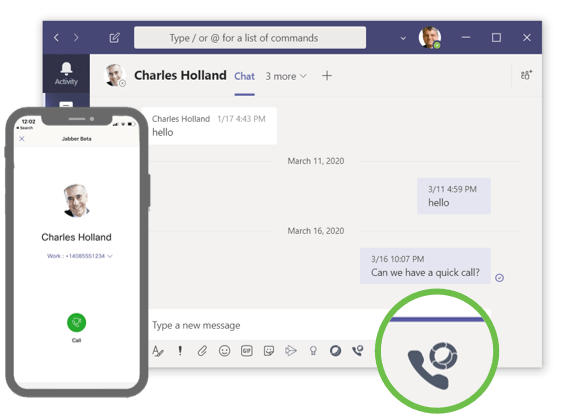Comparing Cisco Client Integration with Direct Routing for Microsoft Teams
At the height of the COVID-19 pandemic, organisations faced pressing challenges and looked for ways to quickly enable their remote workforce by
- Keeping workers engaged
- Enabling work to be done anywhere
- Providing enterprise-class capabilities and performance to home users
Six months later, organisations now face a different challenge: to facilitate the return to the workplace while
- Ensuring worker safety and wellness
- Bridging technological gaps
- Building a secure and distributed-work model
- Enabling operations to scale
To that end, Cisco has prepared a blueprint that focuses on empowering the remote worker and paving a safe return to the office. It includes touchless technology and collaboration tools that build bridges with other platforms such as Microsoft Teams to offer innovative and seamless options for organisations to leverage existing investments, support tactical decisions and provide interoperability between multi-vendor Calling, Messaging and Meetings platforms.
In this post, we will focus on two available interoperability options between Cisco Collaboration and Microsoft Teams, followed by a quick comparison and summary.
Cisco Client Integration for Microsoft Teams
The Cisco client integration with Microsoft Teams allows your team to use all Cisco Collaboration enterprise-grade voice and video calling features in combination with the Microsoft Teams client. The client-side integration, for Calling and Meetings workloads, provides an alternative for users to retain the Microsoft Teams client without the constraints of Direct Routing.
Direct Routing for Microsoft Teams
A Direct Routing interconnect enables PSTN calling functionality within the Microsoft Teams client. The Direct Routing interconnect with Cisco Collaboration calling is currently a roadmap item, and not supported by Cisco at this time.
When supported, the functionality will likely be similar to Direct Routing PSTN calling – number display and call routing only. For example, standard telephony features such as ‘caller name display’, ‘message waiting indicator’ and ‘callback’ will be unavailable.
Cisco Client Integration vs Direct Routing
Key comparison areas include both benefits and challenges, with a focus on:
- End-User Experience
- Deployment and IT Management
- Financial Implications
|
|
Cisco Client Integration |
Direct Routing for Microsoft Teams |
|
BENEFITS |
||
|
End-User (Features) |
|
|
|
Deployment and IT Management |
|
– |
|
Financial Implications* |
|
– |
|
CHALLENGES |
||
|
End-User (Features) |
|
|
|
Deployment and IT Management |
|
|
|
Financial Implications |
– |
|
*No additional costs if the customer current user licensing supports multiple devices per license
Cisco Client Integration: a better alternative to Direct Routing for Microsoft Teams
In summary, although the Direct Routing approach provides limited integration options between the two platforms, it has the benefit of utilising a single client-side application. The main drawback is an inconsistent user experience across different workflows, together with the unavailability of both basic and advanced telephony features on the Microsoft Teams calling side when calling between the platforms. The lack of visibility for end-to-end voice network traffic, and the complexity of the architecture are also factors in addition to this feature still being under development. The Direct Routing interconnect is recommended during the transition phase of migration, rather than a permanent solution.
The Cisco client integration, on the other hand, is simple to deploy, easy to manage, provides a consistent user experience, supports the most features, and provides end-to-end visibility of voice network traffic. The only challenge is to deploy and manage two client-side applications.
Would you like to improve the user experience of your Microsoft Teams and Cisco users?
Would you like to provide proven, enterprise-grade telephony and contact centre capabilities for your Microsoft Teams users?
Would you like to use Microsoft Teams with your on-premise Cisco Unified Communications Manager (CUCM or CallManager) and Cisco Jabber deployments?
Would you like to use Microsoft Teams with your cloud-based Cisco Webex Calling (WxC) subscription?
Let’s Talk.
Peak Insight is an award-winning Cisco Collaboration, Contact Centre and Connectivity provider.
We are a safe pair of hands that will take the time to understand your business, working with you to deliver extraordinary business outcomes through our project services, managed services, vendor products and software add-ons.
We take a consulting-led and adoption-driven approach, with in-house software development capabilities to maximise the value of your investment.
Interested to learn more? Let’s talk – schedule a call with our team, or call 1300 026 033 (option 1).

